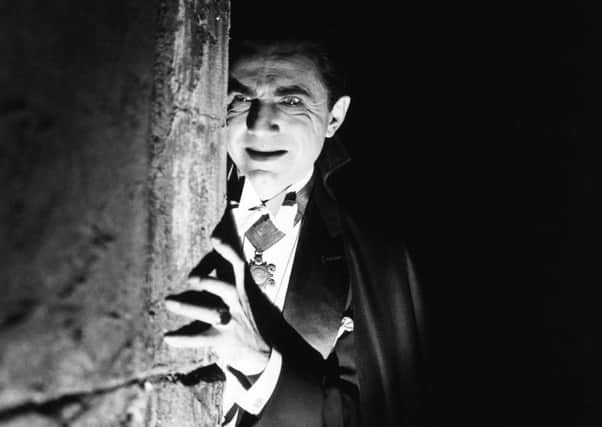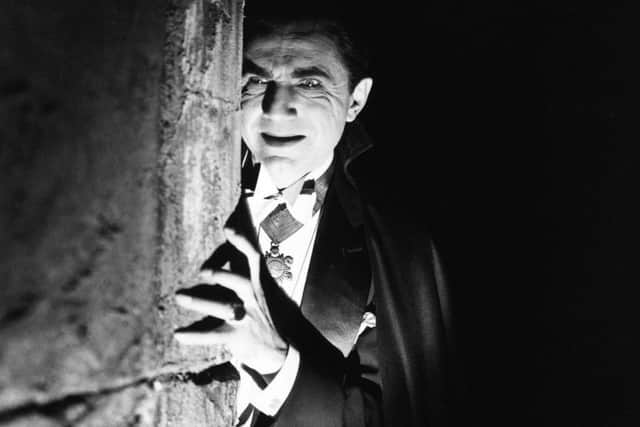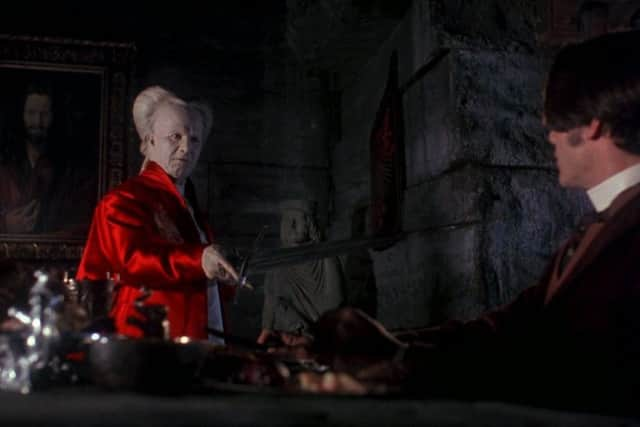Dacre Stoker: My life with Count Dracula


When we speak, Dacre Stoker is just putting the finishing touches to his outfit for his next trip to Whitby. While he’s not planning on embracing the full steampunk look, favoured by those who attend the Goth Festival, he will almost certainly be wearing a top hat, possibly tails and most likely a cravat.
In truth, the Canadian writer doesn’t need to splash out on an extravagant Victorian costume, because when it comes to Gothic associations he pretty much holds the trump card. Dacre is the great grandnephew of Bram Stoker, the Irish writer whose 1897 novel Dracula ensured one small corner of Yorkshire would be forever linked with vampires.
Advertisement
Hide AdAdvertisement
Hide Ad“This will be my second time to Whitby,” says Canadian born Dacre, who now lives in South Carolina. “It’s funny, the first time I came to Yorkshire I was with a Canadian film crew and we were making a documentary about Bram. As soon as we arrived in Whitby a thick fog rolled in from the sea. It was like the weather knew we were coming.


“We walked up the cobble street to the Duke of York pub and just as we were about to walk up the 199 steps we saw the yellow police tape barring our way. It was all very surreal. That night you could feel a real sense of danger, perhaps the same sense of danger that Bram felt all those years ago. Whitby is one of those places which is completely idyllic by day, but on some nights it has a shadowy atmosphere straight out of Gothic literature.”
Whitby has not been shy in promoting its links with the Irish author and his most famous creation. It was in 1890 while staying in Mrs Veazey’s guesthouse that Bram found inspiration for the Dracula and the abbey ruins, as well as St Mary’s Church, loom large in the novel.
“Growing up I was always slightly embarrassed by Bram, particularly at Halloween,” says Dacre, who will be hosting an event designed to expose the man behind the myth at this year’s festival. “When it came to trick or treating the other kids would always ask whether our family would be handing out candy or blood. The joke wore a bit thin after a while.”
Advertisement
Hide AdAdvertisement
Hide AdWith no early literary ambitions of his own, for a while Dacre’s connection to Bram remained little more than a curious claim to fame.


“I guess my interest was first piqued in 1976 when I came across an article about a book written by Raymond McNally called In Search of Dracula. He was really the first to put forward the theory that Bram’s creature was not just a fictional creation, but was actually based on the historical figure of Prince Vlad of Transylvania - better known as Vlad the Impaler. From that point I was hooked.”
Suspecting there was more to his famous ancestor than met the eye, Dacre began researching his background and his career. It wasn’t easy. While Bram had eventually left Ireland and become the business manager of the Lyceum Theatre and PA to actor Henry Irving little had ever been written about it.
However, after years spent juggling his day job as a track and field coach - he led the Canadian men’s pentathlon team at the 1988 Seoul Olympics - in 2003 Dacre, along with horror specialist Ian Holt decided they had enough material to write a sequel to the 1897 tale. Set 25 years after Bram’s novel ended, Dracula the Undead was partly his way of reclaiming the vampire for the Stoker family.
Advertisement
Hide AdAdvertisement
Hide Ad“A copyright irregularity meant that Bram’s wife Florence never benefited financially from the novel and Hollywood was at liberty to do what they pleased with it,” he says. “There was nothing illegal about what they did, it was just one of those things. However, I felt it was right that our family should somehow lay claim to the character and writing the sequel seemed the perfect way to do that.”


The novel which didn’t skimp on graphic descriptions was never going to have the impact of Bram’s own work, but it did lead Dacre to another piece of the Stoker jigsaw.
“When I was writing the novel, I asked various relatives for any information they might have on Bram. Eventually his great grandson Noel, who lives on the Isle of White, said he had a journal which had sat on a shelf for years. The handwriting was so bad he had never bothered deciphering it.”
Dacre was not so easily put off and along with Gothic horror academic Dr Elizabeth Miller the pair reproduced the 300 diary entries, which covered Bram’s life in Dublin in the 1870s, in the Lost Journals of Bram Stoker.
Advertisement
Hide AdAdvertisement
Hide Ad“That I think is my proudest achievement. Bram the man had become overshadowed by Dracula. In most of the existing biographies he had been portrayed as poor old Bram whose book had earned mixed reviews and who had died never knowing how successful it was.


“It wasn’t true. While a few critics hadn’t liked it, most had and I am pretty sure that when he died in 1912 he absolutely knew that with Dracula he had written something truly groundbreaking. The one other story associated with Bram was how sickly he was a child and how his mother used to regale him with stories of how victims of the Sligo cholera epidemic were pushed into graves before they had breathed their last.
“It wasn’t your average bedtime stories and yes, I am sure they left a great impression on Bram, but he didn’t have a macabre mind and I wanted to show that he was more than just that one book. What really emerged through his journal was a man with a great social conscience, someone who was deeply interested in Dublin street life and the plight of the poor.”
From Bela Lugosi’s Dracula in the 1930s to Christopher Lee’s various outings as him in the Hammer Horror films, Bram sparked an entire vampire industry, which has more recently been reignited by the Twilight saga.
Advertisement
Hide AdAdvertisement
Hide Ad“There haven’t been many movies true to the original novel, but that’s largely because the epistolary style in which it was written makes it very difficult. However, I think it is important to keep the genre alive and I think Bram would have loved Buffy the Vampire Slayer and Twilight. He was after all a man of theatre.”
When he comes to Whitby in a few weeks time, Dacre hopes that those who attend Bram: The Man and the Literature, which is being staged with a little help from Whitby Amateur Dramatics Society, will leave having learned something new.
“We have recently found a crazy Icelandic edition of Dracula, which we think was perhaps serialised out there. There are some key differences to the final novel and it may well have been an early draft. There is still so much to discover and I guess I see myself as holding up the banner for the Stoker family and for Dracula.”
Stoker on Stoker, Whitby’s Met Ballroom, 1pm and 4pm on April 22 & 23. The organisers are offering two free tickets to Yorkshire Post readers. To enter, simply email your name and contact details to [email protected]